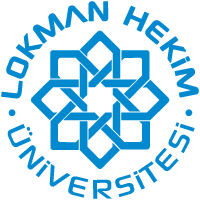| dc.contributor.author | Cerit, Mesut | |
| dc.contributor.author | Dalip, Metin | |
| dc.contributor.author | Yildirim, Damla Selin | |
| dc.date.accessioned | 2021-01-06T08:56:55Z | |
| dc.date.available | 2021-01-06T08:56:55Z | |
| dc.date.issued | 2020 | |
| dc.identifier.issn | 1857-8160 | |
| dc.identifier.uri | http://hdl.handle.net/20.500.12591/439 | |
| dc.description.abstract | Metabolic diseases appea commonly in all countries of the world with advancing age. Approximately one in ten people around the world have diabetes (Type II) and others have a risk of diabetes. It is a known fact that regular physical activity, not only provides a healthy and quality life, it also reduces the risk of getting chronic diseases such as metabolic and cardiovascular diseases. Many studies have been conducted in recent years, suggesting that being active or passive can also be caused by genetic factors with a comprehensive literature base that considers the effects of environmental factors and lifestyle on physical activity levels. Scientists are trying to reveal the effects of the fatty acid binding protein (fatty acid binding protein, FABP)-4, which controls the intracellular fatty rate and triggers the shift of metabolism from balance to imbalance as a result of overnutrition, and (nuclear respiratory factor, NRF)-1 gene, which ensures the preservation of intracellular harmony. The only alternative method that triggers the transition from imbalance to stability (stable) is to increase the activity level and make exercise a part of life. Some genetic structures can arise with many genes and many factors. Genetic infrastructure is susceptible to risk and this can be observed at a high rate in some people. Physical activities are the most effective application and protection method that allows the effects of NRF1 gene to increase by reducing the effect of the FABP4 gene. Regular exercises reduce the risk of getting metabolic and chronic diseases such as cancer, blood pressure and diabetes triggered by genetics and lifestyle by affecting the condition of genetic codes in the body. | en_US |
| dc.language.iso | eng | en_US |
| dc.publisher | Spor Bilimleri Fakültesi | en_US |
| dc.rights | info:eu-repo/semantics/openAccess | en_US |
| dc.rights | CC0 1.0 Universal | * |
| dc.rights.uri | http://creativecommons.org/publicdomain/zero/1.0/ | * |
| dc.subject | Metabolic diseases | en_US |
| dc.subject | Physical Activity | en_US |
| dc.subject | FABP4 | en_US |
| dc.subject | NRF1 | en_US |
| dc.title | RELATIONSHIP BETWEEN GENES, PHYSICAL ACTIVITY & METABOLIC DISEASES | en_US |
| dc.type | info:eu-repo/semantics/review | en_US |
| dc.contributor.department | Antrenörlük | en_US |















